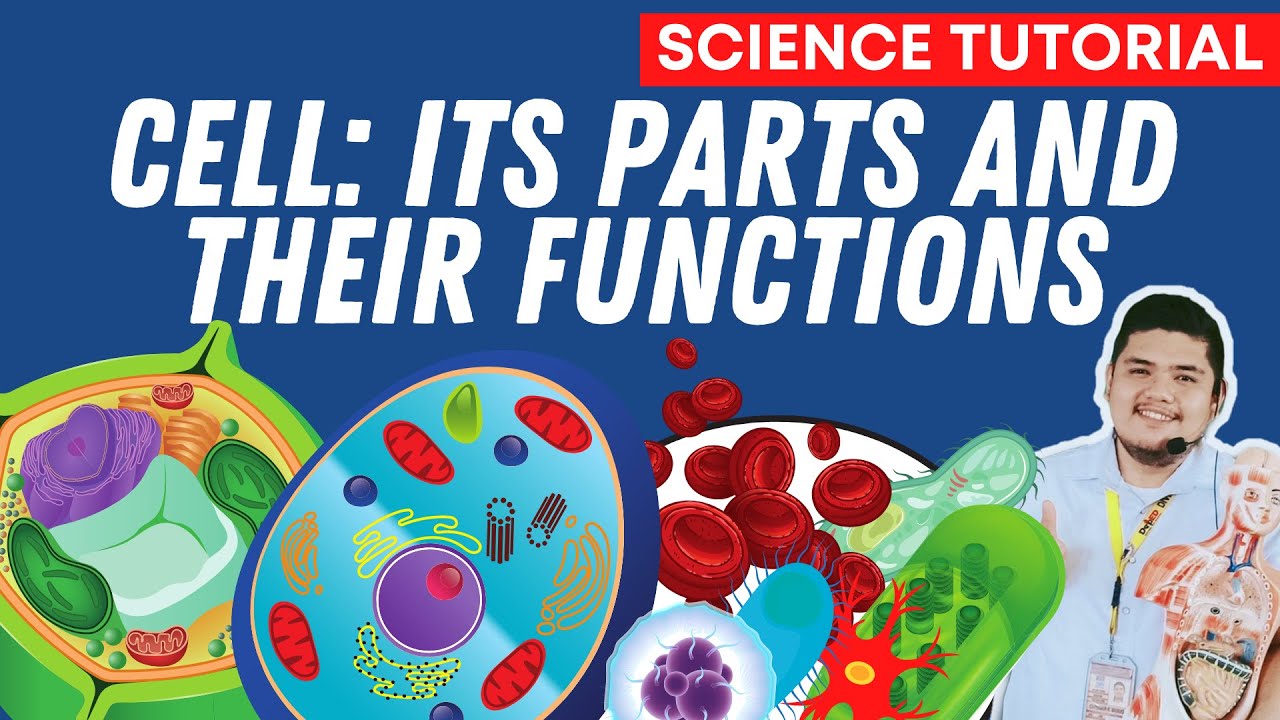Anatomy and Physiology of the Human Cell in 7 Minutes!
Summary
TLDRThis educational video script delves into the anatomy and physiology of the human cell, explaining the terms and exploring the cell's basic structures. It details the cell membrane's role in protecting and regulating substances, the cytoplasm as the site of chemical reactions, and the organelles' specific functions. The nucleus is described as the cell's control center, while the nucleolus, ribosomes, chromatin, and mitochondria are highlighted for their roles in reproduction, protein synthesis, and energy production. The script also covers the Golgi apparatus, endoplasmic reticulum, lysosomes, and pinocytic vesicles, providing a foundational understanding of cellular components and their vital processes.
Takeaways
- 🔬 Anatomy is the study of the form and structure of an organism, while physiology is the study of the processes of living organisms or how they function.
- 🧬 Pathophysiology is the study of how disease affects the normal functioning of living organisms, which will be covered in a different video.
- 🌐 The cell membrane is a semi-permeable barrier that regulates the entry of nutrients and the exit of waste, while keeping harmful substances out and maintaining the cell's shape.
- 💧 Cytoplasm is a semi-fluid substance within the cell that facilitates chemical reactions, similar to how blood functions in the body.
- 🏠 Organelles are specialized structures within the cytoplasm that perform specific functions necessary for the cell's operation.
- 🧠 The nucleus acts as the 'brain' of the cell, controlling many of its functions and playing a crucial role in cell division.
- 🌀 Ribosomes, composed of RNA and protein, are manufactured in the nucleolus and move to the cytoplasm for protein synthesis.
- 🧬 Chromatin, found in the nucleus, is a loose arrangement of DNA and protein that condenses into chromosomes containing genes during cell division.
- ⚡ Mitochondria are known as the 'powerhouses' of the cell, breaking down carbohydrates, fats, and proteins to produce ATP, the cell's energy source.
- 📦 The Golgi apparatus is involved in the production, storage, and packaging of secretions for their eventual discharge from the cell.
- 🔄 The endoplasmic reticulum (ER) aids in the synthesis and storage of proteins, with the smooth ER contributing to fat metabolism and the rough ER facilitating protein production.
Q & A
What is the definition of anatomy as mentioned in the script?
-Anatomy is the study of the form and structure of an organism.
How is physiology defined in the context of the script?
-Physiology is the study of the processes of living organisms or how they function.
What is the primary function of the cell membrane?
-The cell membrane is a semi-permeable structure that allows nutritional elements to enter the cell, unusable waste byproducts to leave, and keeps out harmful substances while maintaining the cell's shape.
What is the role of cytoplasm within a cell?
-Cytoplasm is a semi-fluid inside the cell where all chemical reactions take place, and it contains all the organelles.
What is the nucleus of the cell responsible for?
-The nucleus is the brain of the cell, controlling many functions of the cell and cell division.
What is the function of ribosomes in a cell?
-Ribosomes serve as sites for protein synthesis, moving from the nucleus to the cytoplasm to perform this function.
How are mitochondria described in the script, and what is their role?
-Mitochondria are described as the powerhouse of the cell, breaking down carbohydrates, fats, and proteins to form ATP, which is the energy source for the cell.
What is the role of the Golgi apparatus in a cell?
-The Golgi apparatus produces, stores, and packages secretions for discharge from the cell.
What is the function of the endoplasmic reticulum (ER)?
-The endoplasmic reticulum transports materials into and out of the nucleus, aids in synthesis and storage of proteins, and has smooth and rough regions with different functions.
What is the purpose of lysosomes within a cell?
-Lysosomes digest proteins and fats, break down old cells, bacteria, and foreign materials, and are important to the immune system.
How do pinocytic vesicles assist in the entry of proteins and fat molecules into the cell?
-Pinocytic vesicles are pocket-like folds in the cell membrane that allow proteins and fat molecules to enter the cell, and then the folds close to form vacuoles or bubbles in the cytoplasm.
Outlines

Этот раздел доступен только подписчикам платных тарифов. Пожалуйста, перейдите на платный тариф для доступа.
Перейти на платный тарифMindmap

Этот раздел доступен только подписчикам платных тарифов. Пожалуйста, перейдите на платный тариф для доступа.
Перейти на платный тарифKeywords

Этот раздел доступен только подписчикам платных тарифов. Пожалуйста, перейдите на платный тариф для доступа.
Перейти на платный тарифHighlights

Этот раздел доступен только подписчикам платных тарифов. Пожалуйста, перейдите на платный тариф для доступа.
Перейти на платный тарифTranscripts

Этот раздел доступен только подписчикам платных тарифов. Пожалуйста, перейдите на платный тариф для доступа.
Перейти на платный тарифПосмотреть больше похожих видео

Cells (Parts and Functions), Plant and Animal Cell | Grade 7 Science DepEd MELC Quarter 2 Module 4

Introduction to Anatomy & Physiology - Chapter 2: Cells and Tissues

PARTS AND FUNCTIONS OF A CELL SCIENCE 7 QUARTER 2 MODULE 3

Anatomi dan Fisiologi Manusia | Anfisman | Part 1

PART 1|| ISTILAH-ISTILAH (TERMINOLOGI) ANATOMI DALAM ILMU MEDIS

Introduction to Anatomy & Physiology: Crash Course Anatomy & Physiology #1
5.0 / 5 (0 votes)
